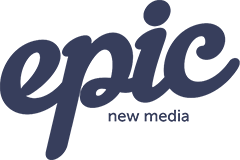A Guide to SEO Optimising Existing Content

Content marketers face many challenges when it comes to SEO. Well-ranking pages can quite easily lose their traffic if you don’t keep up to date with SEO trends. With around 90% of internet users using Google Search, it’s important to pay attention to what this search engine is going with its algorithms as changes can impact page rankings significantly.
Google notoriously doesn’t reveal very much about its algorithm updates and their implications so it takes time to figure out how they affect search results. The best content marketers will ensure they’re on top of the game to review and refresh their SEO to keep ahead of the competition.
This article will help you focus in on your on-page SEO to align with current standards and take your ranking to the next level.
Research what pages and keywords need optimising
A thorough analysis of your pages is needed. When you know where you stand in terms of pages that perform well or not so well, you can focus your attention where it’s most needed.
Each page should have the right keyword as a focus. If you use the right phrases, you’ll rank higher and get more traffic and more conversions as a result. Avoid keyword cannibalization. This is when your site has multiple pages targeting the same (or similar) keywords. Essentially, this means two pages on your website are competing with each other and overall, this will hurt your organic performance.
When you’ve got a distinct and clear focus for each page, review the keywords that rank in positions 4 to 20. These will provide better opportunities to gain more traffic.
Where to put your keywords
It’s no good putting keywords all over the place and thinking ‘job done.’ Google will analyse how keywords are used on a page.
As a minimum, make sure your primary keyword is used in the h1 tag. Secondary keywords should be used in h2 tags. Target keywords should be frequently used in the content, but not overdone.
Don’t forget to also update your meta description to reflect the changes you’ve made.
Match the content to the intent of the keyword
When people search online, they do so for a specific reason. Maybe they want to answer a question, learn about something, find something specific, or buy something. This is called their ‘search intent.’ Your chosen keywords must match the search intent for which they’re used. If it does, you’re much more likely to get your site bookmarked, gain a new mailing list subscriber, or make sales.
This is potentially a big job. It makes a difference as to whether your keywords direct people to a blog post or a landing page, for example. This might mean you need to reformat existing pages and their content significantly. For example, if the keyword search is looking for the best of something, then a list post will be appropriate. For a different keyword, a how-to post will be sufficient.
When your keywords and search intent match, you’ll be more likely to meet the needs of your potential customers. There are also benefits for the business too. Google’s tools can interpret your content to see how it relates to similar queries. If your search intent is spot on, your site could show up in a greater number of different searches as a result.
Optimised keyword search intent also means a reduction in bounce rates too. Visitors are much less likely to hit the back button if you’re giving them the solution to their query or the product you’re looking for.
This optimisation also means your site is more likely to feature as a snippet. This premium position is the Holy Grail of SEO. If you get up there, your site is more likely to be seen and visited.
Competitor research
Google Scholar says it itself under the search bar: stand on the shoulders of giants. For SEO purposes, this means analysing your competitors through reverse engineering.
SEO competitor analysis involves knowing who your competitors are, analysing what works for them (target keywords, links, content, etc.), and leveraging this knowledge to improve SEO on your site.
Rather than guessing target keywords, content and links, use your competitors for research. To put it bluntly, if they’re ranking higher than you on Google, they’re doing something you’re not. Find out what that is.
Calls To Action and Trust Signals
Calls To Action will be a frequent feature on the most successful websites. They feature in lots of places and need to be both on-brand and eye-catching to draw customers to act. When reviewing your existing content, don’t presume your existing trust signals and CTAs are ok as they are. The content you’re sharing might well be the first introduction to your brand and so it needs to leave visitors with a good impression.
When CTAs are done right, they can be an important trust signal for visitors to think you’re the right place or company for them. They need to be centred on your brand and be consistent in font and style. When visitors become customers, a consistent brand image will reassure them that you are trustworthy. Getting this right is most important for the conversion stage when a customer is buying a product, but for inbound marketing (creating content that matches search intent), it’s crucial throughout.
As your site or company evolves, so too should your trust signals and CTAs, and they always need to be focused on the customer.
Speak to us
Getting SEO right isn’t easy, which is why many online marketers choose to get expert help. Here at Epic New Media, we live and breathe SEO. It’s what we do day in, day out. When something is so important for success, it makes sense to invest to get it right. Epic New Media can help you with all aspects of SEO and offers a free audit of your site. Get in touch today to see how we can help your site reach new heights.
